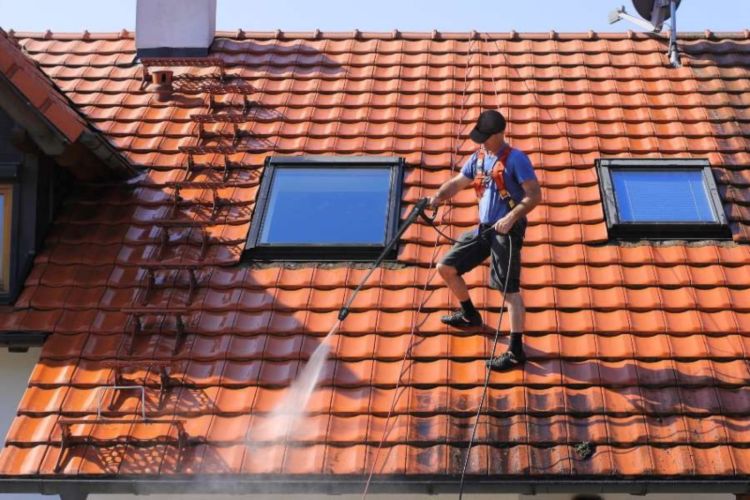Roof Venting for Shingle Roofs
Proper roof ventilation is a crucial aspect of maintaining the health and efficiency of any home, particularly those with shingle roofs. Effective ventilation systems help regulate temperature and moisture levels within the attic, preventing damage to the roof structure and prolonging the life of the shingles. In this article, we will explore the importance of roof ventilation, focusing on shingle roofs. We will discuss benefits of proper ventilation, various solutions and systems available, practical tips for improving airflow, and how enhanced ventilation can significantly boost the durability and longevity of shingle roofs.
Importance of Roof Ventilation
Roof ventilation plays a pivotal role in safeguarding the structural integrity and overall health of a home. By facilitating the exchange of air, proper ventilation helps to prevent heat buildup during the summer, which can reduce cooling costs and prevent the deterioration of roofing materials. In the winter, ventilation mitigates moisture accumulation that can lead to mold growth, wood rot, and ice dams. Ensuring adequate ventilation is essential for maintaining a stable indoor environment and protecting the home from potential damage caused by temperature extremes and excess humidity.

Optimizing Ventilation for Shingle Roofs
Optimizing ventilation for shingle roofs involves several key considerations to ensure a balanced and effective system. Factors such as the size and layout of the roof, local climate conditions, and the specific type of shingles used all play a role in determining the best ventilation strategy. An effective system typically includes a combination of intake and exhaust vents, such as soffit and ridge vents, to promote continuous airflow. Proper installation and regular maintenance are crucial to prevent blockages and ensure the system functions correctly.
Benefits of Proper Roof Ventilation
Proper roof ventilation offers numerous benefits that contribute to the overall health and efficiency of a home. One of the primary advantages is enhanced energy efficiency, as adequate ventilation helps regulate indoor temperatures, reducing the need for excessive heating or cooling. This can lead to significant savings on energy bills. Additionally, proper ventilation extends the lifespan of the roof by preventing heat and moisture buildup that can deteriorate shingles and other roofing materials. It also helps prevent mold and mildew growth, which can affect indoor air quality and pose health risks to occupants. Overall, effective roof ventilation ensures a more comfortable living environment and protects the home from potential damage.
Ventilation Solutions for Shingle Roofs
There are various ventilation solutions available for shingle roofs, each with its own set of advantages and suitability depending on the roof’s design and the home’s specific needs. Common options include ridge vents, which run along the peak of the roof and allow warm air to escape; soffit vents, located under the eaves to facilitate cool air intake; and gable vents, installed on the gable ends of the attic to provide cross ventilation. Power vents, which use electric fans to enhance airflow, can be particularly effective in larger or more complex roof structures.
Ventilation Systems for Asphalt Shingles
Ventilation systems designed for asphalt shingle roofs must balance durability with efficiency to ensure long-term performance. Key components often include ridge vents and soffit vents, which work together to promote a continuous airflow through the attic space. Ridge vents are installed at the roof’s peak, allowing hot air to escape, while soffit vents at the roof’s eaves draw in cooler air from outside. Additionally, baffles can be used to direct airflow and prevent insulation from blocking the vents. Proper installation is crucial, as poorly installed ventilation can lead to issues such as moisture buildup and decreased shingle lifespan.
Improving Air Flow in Shingle Roofs
Improving airflow in shingle roofs is essential for maintaining a balanced and effective ventilation system. This can be achieved through the strategic placement of intake and exhaust vents to ensure a continuous flow of air through the attic space. Installing ridge vents at the roof’s peak and soffit vents along the eaves facilitates this airflow, with baffles used to keep insulation from obstructing the vents. Regular inspections and maintenance are crucial to remove any debris or blockages that could impede airflow. Additionally, ensuring that attic insulation does not cover vent openings helps maintain proper ventilation.
Shingle Roof Ventilation Tips
Maintaining optimal ventilation for shingle roofs involves several practical tips that homeowners and contractors can follow. Regularly inspect the attic and roof vents for any signs of blockage or damage and clean out debris to ensure unobstructed airflow. Ensure that intake and exhaust vents are properly balanced to facilitate continuous air movement through the attic. Avoid covering vent openings with insulation or other materials. In regions with extreme weather conditions, consider installing additional ventilation solutions like power vents to boost airflow. Lastly, seek professional advice for the best ventilation strategy tailored to the specific design and requirements of your roof.
Ventilation Options for Asphalt Roofs
Asphalt roofs benefit from a variety of ventilation options designed to enhance airflow and maintain optimal attic conditions. Common choices include ridge vents, which allow hot air to escape from the roof’s peak, and soffit vents, which draw in cooler air from the eaves. Gable vents, positioned on the gable ends of the attic, provide additional cross ventilation. For homes in hot climates or with complex roof structures, power vents with electric fans can be particularly effective in boosting airflow. Each option has its own cost and installation considerations, making it important to weigh the benefits against the investment required.
The Bottom Line
Proper roof ventilation is essential for maintaining the health, efficiency, and longevity of shingle roofs. Effective ventilation systems regulate temperature and moisture levels, preventing damage to roofing materials and improving indoor air quality. By understanding the importance of ventilation and exploring various solutions, homeowners can make informed decisions to optimize their roof systems. Regular maintenance and strategic planning ensure continuous airflow, enhancing the durability of shingle roofs. Investing in proper ventilation not only protects the home but also offers long-term energy savings and comfort. You should assess your current ventilation systems and implement necessary improvements to safeguard their roofs.
Call Paul Banges Roofing
Ensure your shingle roof’s longevity and efficiency with expert ventilation services from Paul Banges Roofing. Our team specializes in comprehensive roof ventilation solutions, including inspection, installation, and maintenance. Proper ventilation prevents heat buildup and moisture damage, protecting your home, and reducing energy costs. Contact us today for a free estimate and let our experienced professionals assess and enhance your roof ventilation system.





